In the previous post on Binary to Gray code conversion for PSK, I had claimed that “for a general M-QAM modulation the binary to Gray code conversion is bit more complicated“. However following a closer look, I realize that this is not so complicated. 🙂
The QAM scenario can be treated as independent PAM modulation on I arm and Q-arm respectively. For example, let us consider 16-QAM scenario.
Each constellation point can represent bits, with two bits on the I axis and two on the Q axis. For 16-QAM, the values taken by the I and Q axes are {-3, -1, +1, +3}. The two bits on the I and Q arm can be Gray coded as shown in the table below
| b0b1 | I | b2b3 | Q |
| 00 | -3 | 00 | -3 |
| 01 | -1 | 01 | -1 |
| 11 | +1 | 11 | +1 |
| 10 | +3 | 10 | +3 |
Table: Gray coded constellation mapping for 16-QAM
The constellation diagram with the bit mapping is shown below.
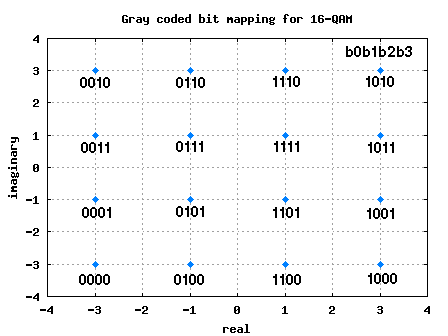
Figure: 16QAM constellation with Gray coded mapping
As can be observed from the figure above, the adjacent constellation symbols differ by only one bit. As simple as that. 🙂
Simulation model for Binary to Gray coded mapping for 16-QAM
% Matlab/Octave code for converting bits into 16-QAM constellation
clear all
M = 16; % number of constellation points
k = log2(M); % number of bits in each constellation
% defining the real and imaginary PAM constellation
% for 16-QAM
alphaRe = [-(2*sqrt(M)/2-1):2:-1 1:2:2*sqrt(M)/2-1];
alphaIm = [-(2*sqrt(M)/2-1):2:-1 1:2:2*sqrt(M)/2-1];
% input - decimal equivalent of all combinations with b0b1b2b3
ip = [0:15];
ipBin = dec2bin(ip.'); % decimal to binary
% taking b0b1 for real
ipDecRe = bin2dec(ipBin(:,[1:k/2]));
ipGrayDecRe = bitxor(ipDecRe,floor(ipDecRe/2));
% taking b2b3 for imaginary
ipDecIm = bin2dec(ipBin(:,[k/2+1:k]));
ipGrayDecIm = bitxor(ipDecIm,floor(ipDecIm/2));
% mapping the Gray coded symbols into constellation
modRe = alphaRe(ipGrayDecRe+1);
modIm = alphaIm(ipGrayDecIm+1);
% complex constellation
mod = modRe + j*modIm;
Note:
The above code snippet works only for 4QAM and 16QAM.




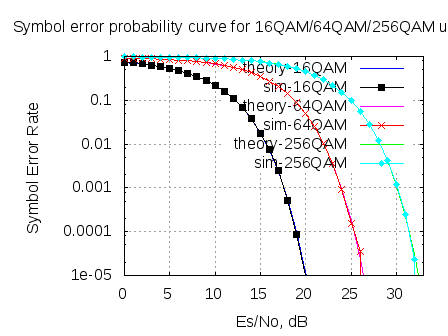
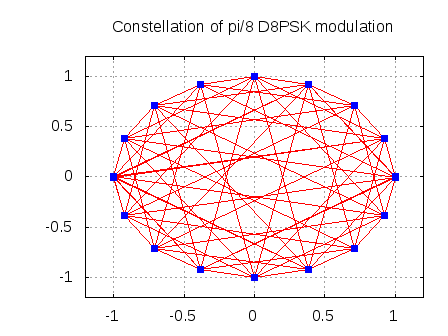
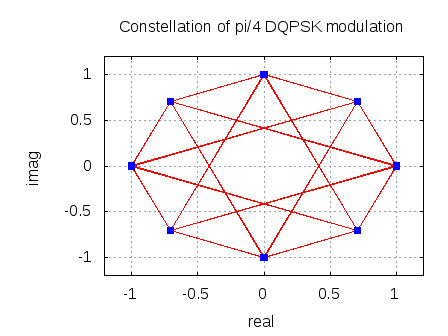
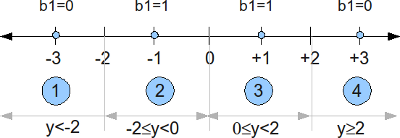
hello,
krishna please answer me if you have the response .
thanks
@imene: plz see above
Hello,
I found your mail in site mathworks, so I decided to contact you to request information please.
I am a student at the University of Poitiers in France,
I work on a topic of digital communication (BICM-ID and image transmission) first offers but I have to implement a digital transmission channel,
first time I have a code BICM (Bit Interleaved Coded Modulation) with a Viterbi decoder I want to do with a MAP decoder, the MAP so I did it but with BPSK modulation and now I want to do this with 16QAM but I can not do the demapping and calculation of LLRs 4.
if you can guide me or direct me please Mr. krishna
and if you want me to send you the code to see.
thank you in advance for your understanding and I expect a reply from you with impatience.
Sincerely.
@imene: the post on softbit for 16qam might be of help
https://dsplog.com/2009/07/05/softbit-16qam/
i need your help…can i have your email id????
@shreya: you can use the comments section. my email id is listed in https://dsplog.com/about/
SALUT tt le monde
SVP je suis dans un cas délécat
vous connaissez comment faire le décodage map mais avec 16QAM
je l’ai mé avec BPSK
merci de me répondre ds les bref délai
merci
@imene: Thanks, but I can’t read French 🙂
hello you have done great job.
I want code of 16 qammod and demodulatio to see the effect of carrier offset in it.
As inbuild code dose not allow to pass me frequency so i can’t do it.
If you have specific code for 16 qammod and demod then sent me.
@ghadiya: Hmm..no, I do not have the qammod() function
how about for demodulator?
@pi: BER for 16QAM with Gray coding is discussed in https://dsplog.com/2008/06/05/16qam-bit-error-gray-mapping/
How about 8QAM Bit Error Rate (BER) with Gray mapping????